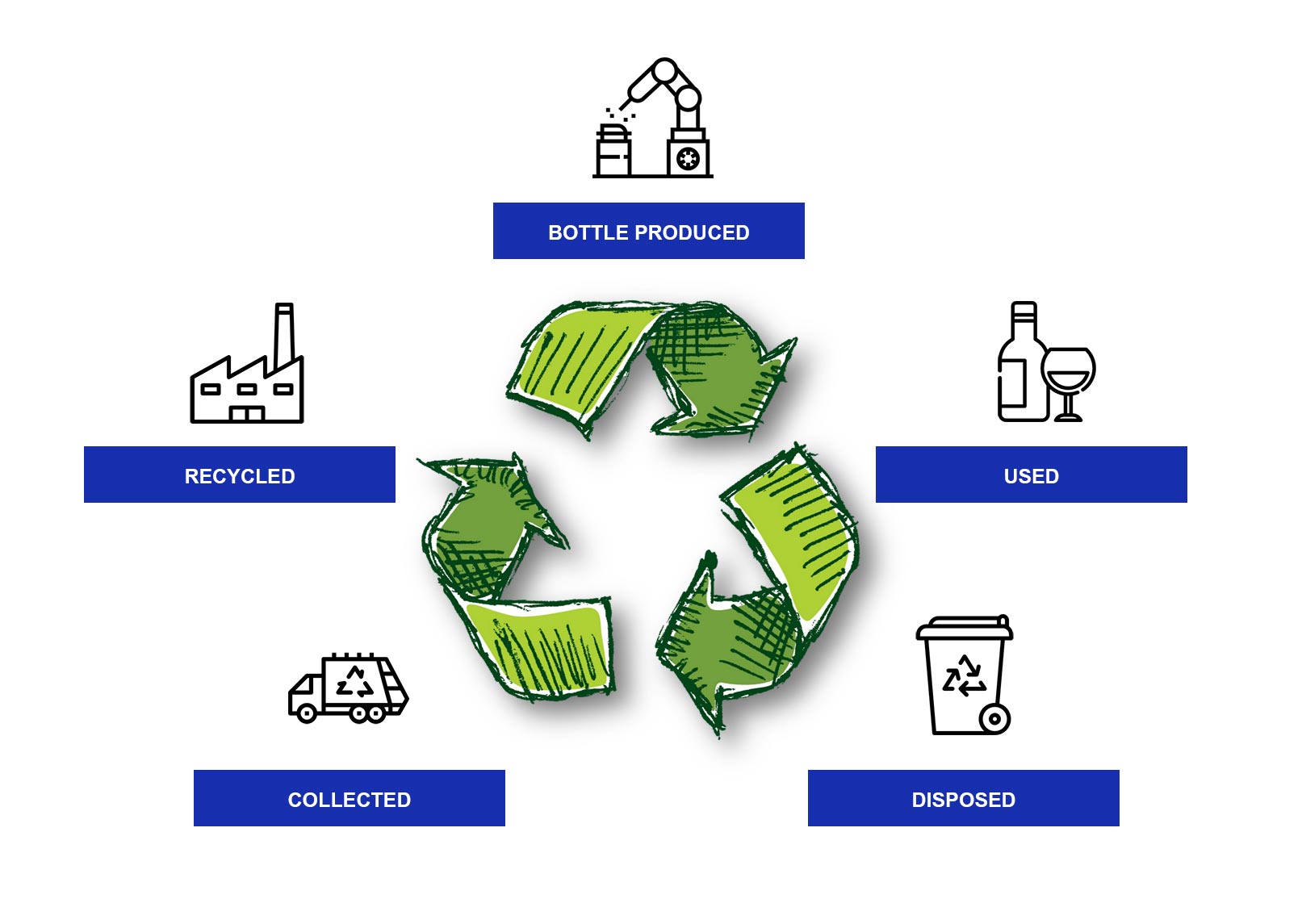So what happens to your glass container once you have consumed the product inside? You could “dump it” in landfill. But that is wasteful, irresponsible and even anti-social. Glass is too valuable a commodity, and it should be recycled, for all the reasons given in the section “Benefits of Glass Recycling”. So what happens on the recycling journey?
You can take it to a bottle bank (a system known as bring), or it might be collected on your doorstep (known as kerbside collection). It speeds up the process if glass is already roughly sorted into brown, clear and green, as it is at bottle banks, but with many methods of collection, including domestic recycling boxes, that isn’t always possible.
Glass can also be collected in mixed colours.
Once it is collected, the glass is transported to a MRF (Materials Recycling Facility) or a glass recycling and treatment plant, such as the ones operated by URM, the country’s leading glass recycler.
The most popular and environmentally favourable approach to glass recycling is to remelt it to produce more bottles and jars. Every 1,000 tonnes of recycled glass that is used in this way saves 345,000 kWh of energy, 314 tonnes of CO2, 1,200 tonnes of raw material and 1,000 tonnes of landfill.
Put simply, the energy saved from recycling one bottle will power a 100 watt light bulb for almost an hour or a computer for 20 minutes. In 2017, the UK recycled 1,622,000 tonnes of used bottles and jars.
Once in the treatment plant, the raw cullet undergoes a number of processes to remove contamination from the cullet, large metallic objects such steel cans and bottle caps are removed with magnets before the material passes into enclosed chambers where blown air is used to remove large lightweight objects such as paper, plastic bottles, and plastic jar lids. This material is then manually sorted to remove any objects which may cause issues during the recycling process.
From here the material is fed into a vertical dryer, this draws hot air up though the cullet as it enters the dryer, this flow of hot air will remove the moisture from the cullet as well as glass dust and paper labels which have been freed from the bottles and jars. The cullet which is now dry and clean passes over an Eddy Current separator to remove aluminium before it is transported to the sorting machines. The first stage of sorting is the removal of contamination such as ceramics, stones, metals, Lead Crystal glass & heat resistant glass.
The material is fed into the sorting machines via vibrating feeders and conveyors, as the material passes through the primary sorting stage it is illuminated from below and above with different types of light, the high definition cameras inside the machines scan the image of each cullet and detect the (RGB) Red, Green, & Blue spectrum. The information from the camera is sent to the processing computer which evaluates the (RGB) against set parameters, these parameters tell the computer what the ceramic, stone and heat resistant glass appears like in the RGB spectrum. Where the computer detects a piece of contamination it then sends a signal to the high speed, high accuracy compressed air jets to fire and eject the contamination from the flow of cullet. From the cullet entering the sorting machine to the point of ejection is only a few milliseconds. For the removal of lead crystal glass additional ultra violet lights are used for illuminating the cullet and the information is processed in the same way. Within the sorting machine as well as the high definition cameras there is a metal detection coil, when metallic objects pass over the coil the computer checks the reading against the set parameters; and again ejects items such as aluminium neck rings from bottles or ring pulls from a can.
The cullet is now free from contamination but is still mixed colours, the same technology used for removing the contamination is used to detect the various different colours and shades of glass. The glass is separated by the machines into the 3 main colours which are Flint (clear), Amber (Brown) & Green.
The final stage of the process is to crush the material to size before it is sampled and tested to ensure that it meets the required specifications. This material is then supplied to bottle and jar manufacturers who make new bottles and jars from the finished, high quality cullet.
This type of recycling is known as “Closed Loop” system, where waste material is turned back into its original form. In the case of glass bottles and jars this loop can be repeated over and over again, forever!


